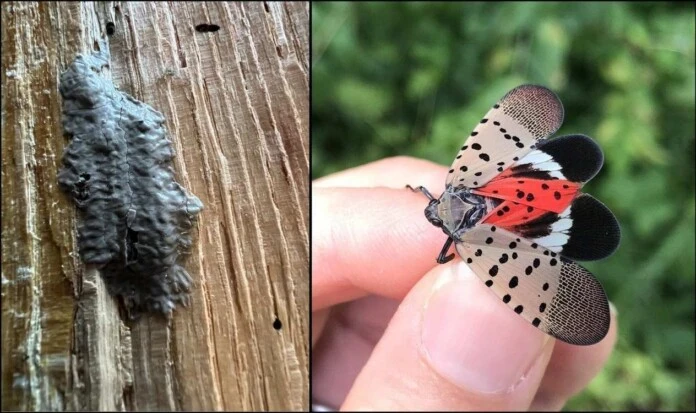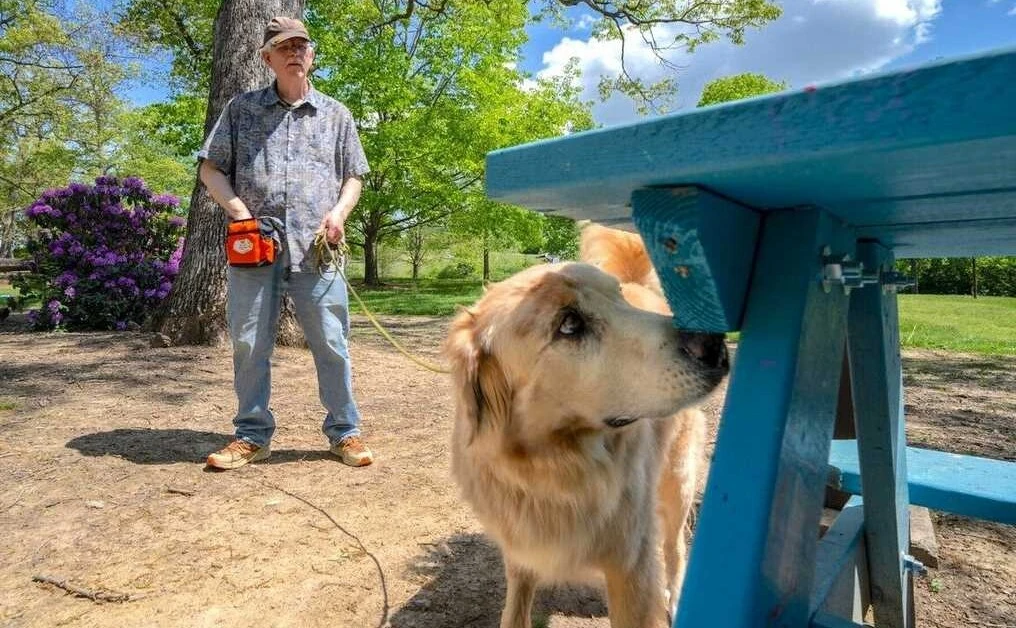A real-world trial at Virginia Tech has shown that everyday dogs and their owners can play a vital role in stopping the spread of a major invasive insect species in their communities.
The spotted lanternfly, a pest native to Asia, was first detected in Pennsylvania in 2014. Since then, it has rapidly spread to 18 U.S. states, laying its eggs on trees, rocks, lumber, and even vehicles—making it easy to hitch a ride to new locations.
Early detection is crucial, but spotting these egg masses is notoriously difficult. That’s where dogs come in.
With their sense of smell thousands of times more powerful than ours, dogs can be trained to detect lanternfly egg masses—without disturbing the surrounding environment.
“They often resemble mud smears or lichens and are tucked into bark crevices, cracks, or hidden undersides,” said Mizuho Nita, a plant pathologist at Virginia Tech and co-author of the study. “Finding them is like searching for a needle in a haystack.”

While professional conservation dogs have proven effective at finding these eggs, they are expensive and in short supply. That’s why Sally Dickinson, lead author of the study and a recent Ph.D. graduate from Virginia Tech’s College of Agriculture and Life Sciences, explored a new approach: citizen scientists with pet dogs.
“With proper training, dog owners can turn their pets into powerful partners for conservation,” Dickinson explained.
Many dog owners already engage in scent detection games, teaching their dogs to identify and track various scents for fun and enrichment. And it turns out that, with training, most dogs—regardless of breed—can develop these skills.
The study recruited 182 human-dog teams from across the U.S. They were provided with devitalized spotted lanternfly egg masses (non-hatching) as training aids. Participants trained their dogs at home or in small groups, guided by a local trainer.
After several months of training, the dogs were tested in two settings: one indoor controlled test, and one outdoor field test.
In the indoor test, dogs had to correctly identify a box containing the egg mass from among several decoy boxes. Those who passed moved on to the outdoor field test, where they searched for the scent in a more complex, real-world setting.
The results were impressive:
- 82% success rate in the indoor test
- 61% success rate in the outdoor test
- Of those who passed both tests, 92% successfully identified live egg masses with minimal additional training.
“These teams demonstrated that citizen scientists and their dogs can play a meaningful role in protecting agriculture and the environment from invasive species,” Dickinson said.
In places like vineyards and orchards, lanternflies are wreaking havoc—damaging crops and slashing yields. Resistance of any kind is welcome, and if that means enlisting your dog to sniff out invaders during a walk in the park or woods, it could mean the difference between a farmer’s profit and a devastating loss.
